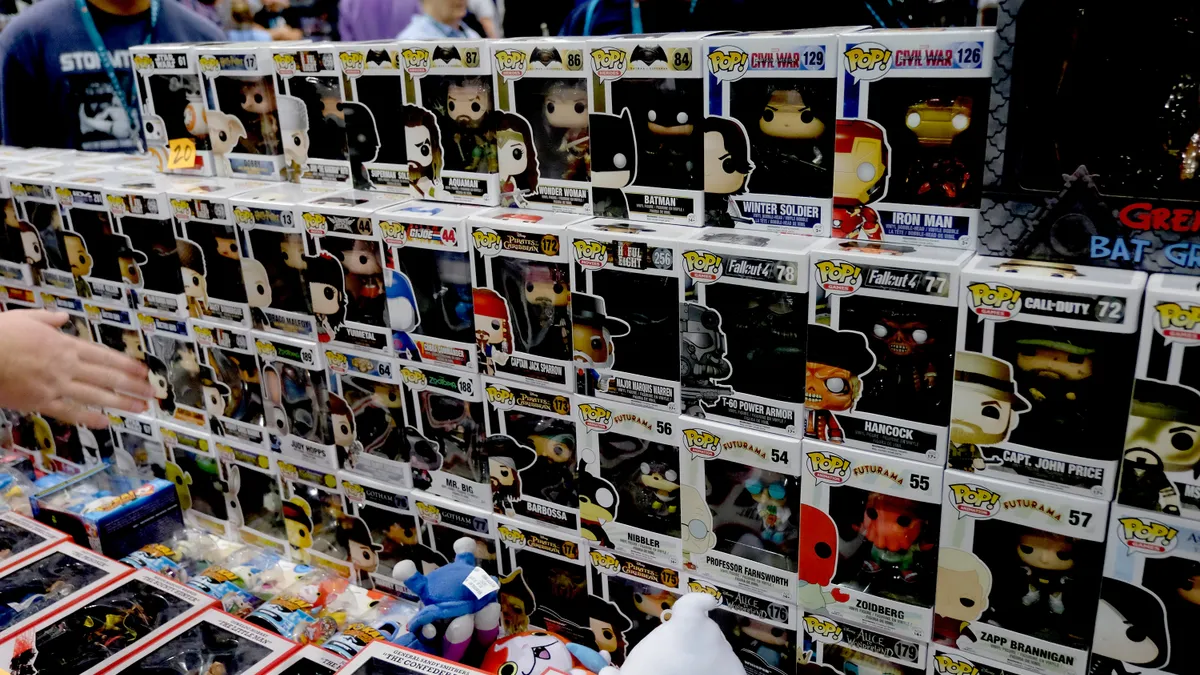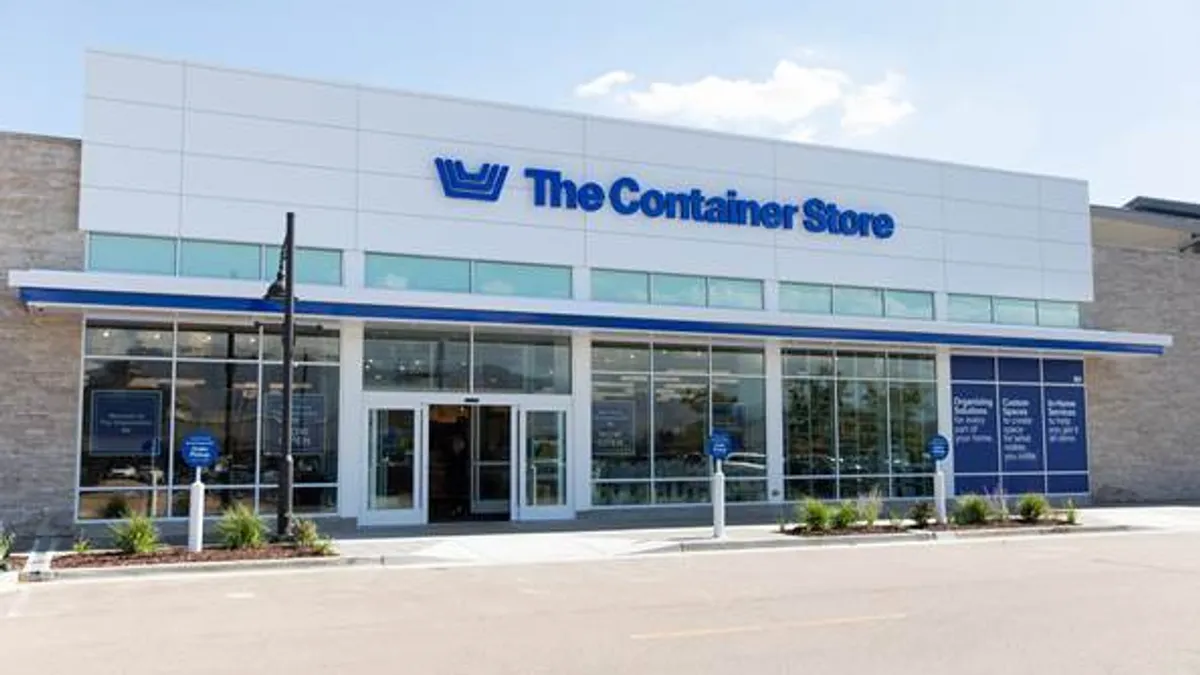Retailers and brands catering to wealthy customers aren’t entirely immune to the current macroeconomic challenges, which could get even tougher next year if recessionary fears are realized. Still, upper-income households are fairly well insulated from inflation and other financial difficulties, and that’s showing up in the sales figures at higher-end stores.
This year so far, 95% of luxury brands in the U.S. and Europe generated positive growth, according to recent research from Bain & Co. Globally, the luxury market could grow 21% this year to reach €1.4 trillion ($1.45 trillion at press time).
Luxury is entering a post-streetwear phase, and brick-and-mortar stores are regaining their importance, according to Bain analysts. “A deliberate (and effective) ‘elevation strategy’ has driven a progressive price increase across the industry (driving around 60% of the 2019-2022 growth) without damaging volume growth,” according to Bain’s press release.
For now, the strong U.S. dollar is taking some of the wind out of the segment’s sails. And the pandemic is interfering with the success many luxury brands have been enjoying in China in recent years, as lockdowns there continue. Much of this played out in recent reports from luxury players Capri, Tapestry and Ralph Lauren.
Capri
At Capri, which runs Versace, Jimmy Choo and Michael Kors, total Q2 revenue rose 8.6% year over year to $1.41 billion; adjusted for currency translations, total revenue rose 17.5%. Gross profit rose 7.6% to $951 million, net income rose 12% to $224 million, and gross margin contracted somewhat to 67.4%, from 68% last year.
By brand, compared to the same period last year, Versace revenue rose 9.2% to $308 million; Jimmy Choo revenue rose 3.6% to $142 million; and Michael Kors revenue rose 9.2% to $962 million. The latter is benefitting from an effort to elevate product and raise prices, Capri CEO John Idol told analysts. During the quarter, the Michael Kors brand also launched “Michael Kors Pre-Loved,” an online marketplace for buying and selling gently used items from the brand.
The company enjoyed particular strength in North America and Europe and at full-price stores compared to online or outlet stores, Idol said. The company is also adding more sales associates in department stores in those regions, after cutting back due to the pandemic, which is leading to “a very significant uplift in the business,” he said.
Capri is lowering its outlook for the rest of the fiscal year, however, “due to an increasingly uncertain macroeconomic environment, foreign currency headwinds and the ongoing impact of COVID-related restrictions in China,” Idol also said.
GlobalData Managing Director Neil Saunders is similarly wary of the company’s near term.
“Capri’s results highlight the continued resilience of the luxury sector where, despite numerous economic challenges, consumers continue to spend relatively freely,” he said in emailed comments. “Overall, we think Capri is in a good position. However, we are very cautious about the next quarter as we think softer demand and poor exchange rates will damage growth.”
Ralph Lauren
Ralph Lauren, reportedly worn by the president's granddaughter and her groom at their White House wedding over the weekend, beat expectations in its most recent quarter, with revenue up 5% to $1.6 billion. The apparel brand mostly maintained its outlook for its full fiscal year, with slight adjustments in light of the strong dollar, according to its press release. The company expects net revenue to rise by high single-digits, with adjusted operating margin at the low end of its previous range of between 14% and 14.5%.
Profits tumbled, with net income down 22.1% to $150.5 million. Operating expenses were up 7% year over year, mostly due to marketing investments and higher compensation and selling expenses to support increased revenues and fuel long-term growth, the company said. Retail sales rose 1.9% to $917 million and wholesale rose 8.9% to $619.5 million.
Adjusted for currency headwinds, the brand’s revenue was up closer to 13%, which Saunders called “good progress for the brand across most of the geographies in which it trades.”
That includes China, which Wells Fargo analysts noted “was a surprise bright spot” for the brand in the period, with revenues there up 30%.
“One of the things we are most pleased with is the discipline with which Ralph Lauren is elevating its brand and offer,” Saunders said in emailed comments. “It is gradually turning away from its reliance on discount and mass market third-party channels and selling a lot more direct and through premium retailers which gel with its luxury heritage and positioning. While we believe there is a lot more work to do on this front – especially reducing exposure to some department stores which still treat its garments like bits of old rag – we think the results to-date show it is firmly on the right track.”
Tapestry
Tapestry, which runs Coach, Kate Spade and Stuart Weitzman, last week said revenues during its most recent quarter rose 1.7% year over year to $1.5 billion; Minus the effect of the strong U.S. dollar, the increase was closer to 5%, according to a company press release. Net income fell nearly 14% to $195.3 million.
As at other luxury brands, customers returned to shopping in stores this year. Tapestry’s saw a low-single-digit rise in direct-to-consumer sales at constant currency, led by a high-single-digit gain via physical stores. That offset a high-single-digit decline in e-commerce. Still, on a two-year basis, digital revenue rose over 35% and more than tripled from the pre-pandemic levels of 2019, the company said.
Tapestry sales in Greater China fell 11% “due to Covid-related disruption,” while in North America, revenue rose slightly year over year. Gross margin contracted to 70% from 72.2% a year ago, due to freight expense, which totaled $20 million or some 130 basis points, as well as an currency exchange impact of about 70 basis points.
By brand, sales in the period were flat at Coach (up 4% adjusted for currency); up 7% at Kate Spade (or 10%, adjusted); and down 2% at Stuart Weitzman (or flat, adjusted). But the currency headwinds don’t fully account for slowdown at the conglomerate, which for several years has grown rapidly, according to Saunders.
“[W]e are also detecting some early weakness in the North American market which has, traditionally, been a powerhouse for Tapestry,” he said in emailed comments. “While spending has not collapsed, there has been a slight diminution of demand for higher end accessories and fashion among some middle-income demographics. As much as we believe Tapestry is weathering this storm much better than other players, all signals point to this being a much softer year of revenue expansion.”





















